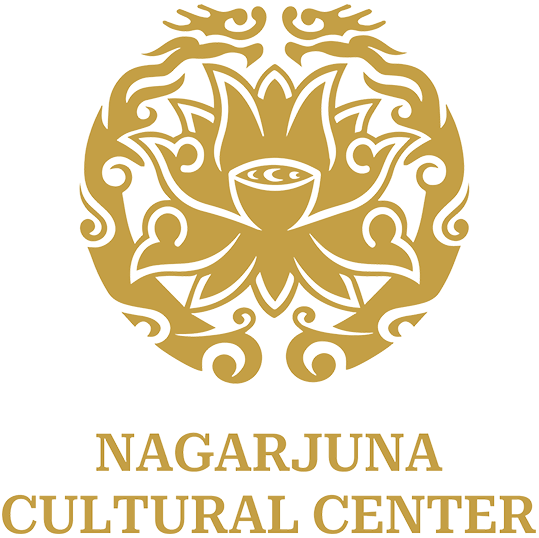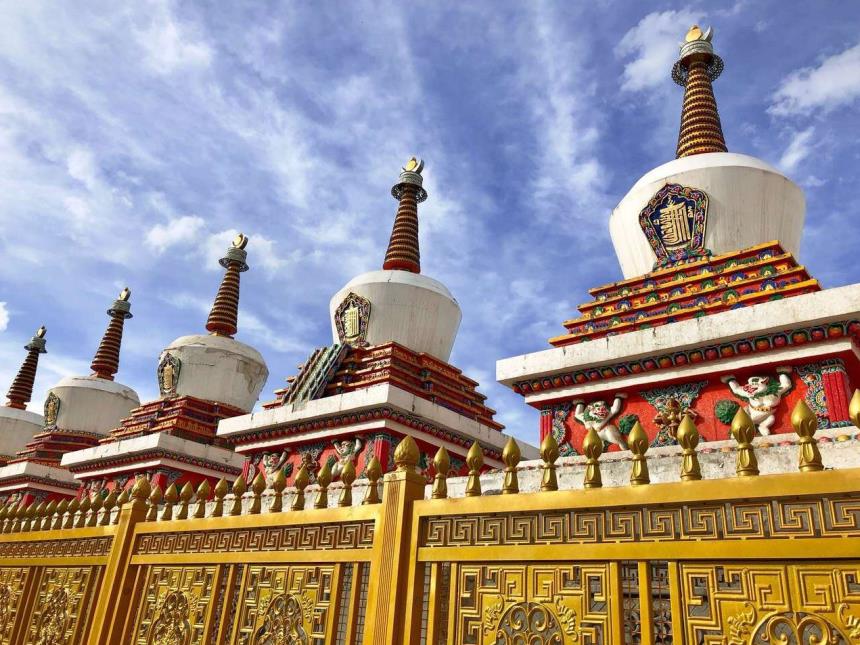Tibetan Buddhism
We have briefly covered the theories and practice methods that the Chinese lineages have. Now, let us talk about Tibetan Buddhism.
Kanjur and Tengyur
The Tibetan language has the most extensive collection of Buddhist scriptures, which are commonly referred to as Kanjur and Tengyur. The Kanjur comprises the teachings directly delivered by the Buddha, while the Tengyur includes commentaries on the Buddha's teachings written by Bodhisattvas and Indian masters. To better facilitate the study and transmission of the massive body of Buddhist theory, the Tengyur was condensed into the Five Great Treatises.
The Five Lineages in Tibetan Buddhism
There are five lineages in Tibetan Buddhism: the Nyingma, Gelug, Sakya, Kagyu, and Jonang. The Nyingma lineage, founded by Guru Lotus-born Padmasambhava, is the oldest, while the Jonang lineage is the smallest. Each lineage has its own understanding of Madhyamaka, with the Gelug lineage holding the view of the Prasangika-Madhyamaka, the Jonang lineage holding the view of Shetong Madhyamaka, and the Nyingma lineage holding the view of the Great Madhyamaka. Despite these differences, all lineages consider Madhyamaka to be fundamental and inseparable from the practice of Prajnaparamita, or the perfection of wisdom. Each lineage also has its own dedicated practice methods.
The Five Great Treatises
The Five Great Treatises are as follows: Abhidharmakosha, a treatise by Vasubandhu that explains the Theravada's phenomenological basis of the world; Pramanavartika (Valid Cognition), a treatise by Dharmakirti that comments on Dignaga's classic Pramana, describing Buddhist epistemology and logic; Madhyamaka, a treatise by Nagarjuna that explains the primary philosophy of Buddhism; Prajnaparamita, a treatise by Maitreya that describes the methodology and stages of accomplishment of the entire process of Buddhist practice; and Vinaya, a set of Buddhist disciplines.
Madhyamaka
If one desires to understand the essence of the Three Pitakas and Twelve Categories of Buddhist Scriptures, studying and practicing Madhyamaka, the Middle-way, is essential. Madhyamaka is both a study and practice of Paramita, a philosophy that translates as wisdom, the wisdom of Buddhism. The profundity of the wisdom of Buddhism is inexpressible, and it can be best understood through the wisdom of Emptiness described by Madhyamaka, which is the heart of the entire Buddhist teachings.
The Prajnaparamitahrdaya (the Heart Sutra) and the Vajracchedika Prajnaparamita Sutra (the Diamond Sutra) are two significant sutras that encapsulate the teachings of Madhyamaka. The Diamond Sutra is relatively lengthy, while the Heart Sutra, which is slightly over two hundred Chinese characters, describes the essence of the entire Buddhist theory and the Second Turning of the Dharma Wheel (Paramita and Shunyata). It would be wonderful to provide a commentary on the Heart Sutra.
While Madhyamaka is primarily a Sutric teaching, some parts of it are also found in Tantric teachings, such as those of Tibetan Vajrayana. The latter includes Kriya, Charya, and Yoga Tantra, which have already been transmitted to various countries including the United States and Canada.
Cittamatra
Aside from Madhyamaka, Tibetan Buddhism also studies and practices other fundamental theories such as Tathagatagarbha and Cittamatra (Weishi). Cittamatra is divided into two categories: Cittamatra by Following Reasoning and Cittamatra by Following Scriptures, with the latter being the one used in Tibetan Buddhism. The Utpannakrama (Development stage) and Sampannakrama (Completion stage) are specific practice methods developed based on these theories. For example, the visualization of Yidam, or a tutelary deity, is a practice of the Development Stage. Some visitors to Tibet are curious about their Yidam and may ask their masters about it, but it is a mistake to view the Yidam as a worldly protective deity.
The Tantric Practice of Nadi, Prana, and Bindu
The development and completion stages of tantric practice involve Nadi, Prana, and Bindu, which refer to channels, qi, and essences. Many intriguing stories have been told about accomplished practitioners, such as Milarepa, who could fly, or a master who brought a dog back to life after chopping it into two pieces. These abilities are the result of reaching a high level of understanding and control over the channels, qi, and essences, as well as the four external elements and self. However, it's important to note that these supernatural capabilities were not the goal of their practice. Their primary aim was to seek the nature of mind and attain the perfect wisdom that the Buddha taught. Supernatural abilities were merely a by-product of their spiritual journey.
Mahamudra and Dzogchen
After completing the practice of Nadi, Prana, and Bindu, a practitioner can delve into Mahamudra of the Kagyu lineage or Dzogchen of the Nyingma lineage. Dzogchen is known as the crown of the nine vehicles and the most comprehensive and complete way of describing the nature of all phenomena. In terms of truly understanding and experiencing the nature of the mind, Dzogchen is the fastest, most direct, and complete method, allowing one to attain Buddhahood in a single lifetime.
Dzogchen shares several similarities with Chan Buddhism in China. Chan Buddhism emphasizes "directly pointing to the human mind, realizing one's true nature, and becoming a Buddha," which is considered the quickest path to spiritual attainment. Similarly, Dzogchen also focuses on recognizing the nature of the mind. However, Dzogchen goes beyond this by offering a unique approach to fully developing the potential of the mind once its nature is understood. Thus, while both traditions emphasize direct recognition of the mind's nature, Dzogchen offers an exceptional quality in its guidance towards actualizing the mind's full potential.
In Dzogchen, recognizing the true nature does not guarantee the attainment of Buddhahood. After recognizing the true nature, one must eliminate the ignorance accumulated since beginningless time by utilizing the virtue of this realization to attain Buddhahood. Once achieved, all the extraordinary qualities of an enlightened being naturally emerge. This practice is known as Togal, a realization of spontaneous presence that surpasses other methods found in Chinese Buddhism. This is why Dzogchen is considered supreme. However, it is important to note that these practices are simply means to realize the wisdom of Paramita and the Tathagatagarbha teaching of the Third Turn of the Wheel of Dharma.
What distinguishes the theories of the Second Turn of the Wheel of Dharma from those of the Third Turn? Essentially, they are the same; the difference lies only in their interpretations based on differing perspectives. However, the Third Turn provides a more comprehensive and complete description. For instance, consider the mug before me as an example. The Second Turn states that the mug's nature does not exist inherently. The Third Turn similarly affirms this, but further adds that the nature of the mug is a manifestation of luminosity, another aspect of the mind. This quintessential account of Buddhism clarifies what the mug is. However, our descriptions are always from limited and biased perspectives. For example, some might describe the mug as round in shape while others as silver in color. Descriptions of nature are similarly varied. It cannot simply be said to exist or not since it transcends the dualistic game of conceptualization in our mind.
It is widely known among those with basic knowledge of Buddhism that the mind has two aspects. The first is Emptiness, signifying that the nature of everything cannot be found anywhere independent of the mind. The second is luminosity, the functional aspect of the purified mind, endowing the Buddha and Bodhisattvas with extraordinary capabilities, hence referred to as the Pure View. Unfortunately, we as individuals have tainted it, resulting in our perception of reality shaping our human body, which in turn creates external entities such as mountains and the earth.





